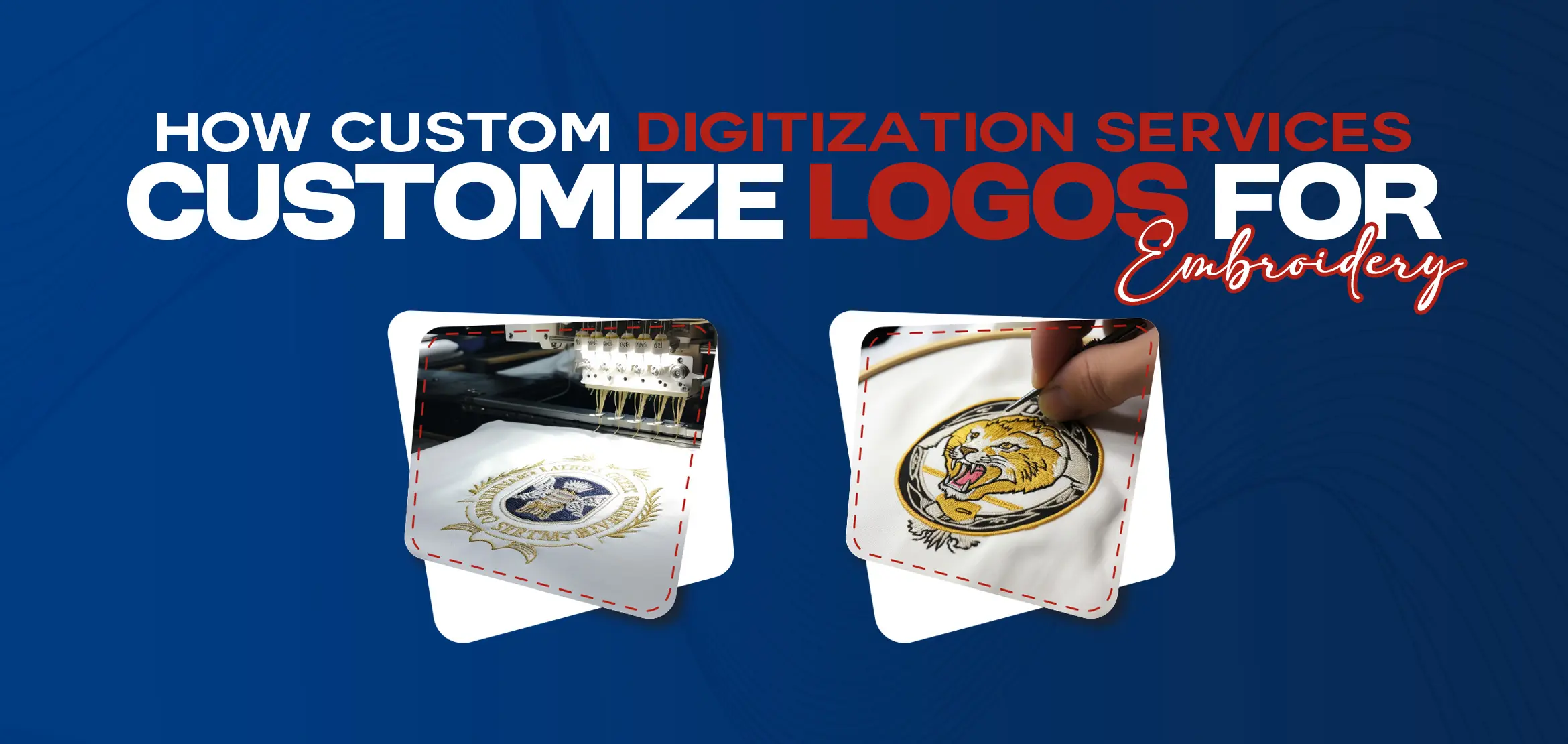
Custom Embroidery Digitizing: Some Important Factors
Table Of Content
- The Importance of High-Quality Digitizing for Custom Embroidery
- Understanding the Custom Embroidery Digitizing Process
- Key Factors to Consider in Custom Embroidery Digitizing
- Selecting the right digitizing software
- Choosing the Appropriate Stitch Types and Densities
- Color Management in Custom Embroidery Digitizing
- Tips for Achieving Optimal Results in Custom Embroidery Digitizing
- Conclusion: Elevating your Custom Embroidery with Effective Digitizing
Embroidery has long been a cherished art form, with its intricate designs and beautiful craftsmanship. But in today's fast-paced digital world, custom embroidery digitizing is taking center stage. If you're an aspiring embroiderer or looking to enhance your embroidery business, understanding the secrets to effective custom embroidery digitizing is essential.
In this article, we will delve into the key factors you should know to unlock the potential of custom embroidery digitizing. From selecting the right software and digitizing equipment to mastering the art of stitch types and densities, we will guide you through the process step-by-step.
Unlock the doors to effective custom embroidery digitizing and give wings to your creative expressions. Let's get started!
The Importance of High-Quality Digitizing for Custom Embroidery
When it comes to custom embroidery, the quality of digitizing plays a crucial role in the final outcome. Poor digitizing can lead to distorted designs, uneven stitch densities, and overall subpar results. To ensure your custom embroidery stands out and reflects your artistic vision accurately, it's essential to prioritize high-quality digitizing.
Effective digitizing involves converting a design into a digital file that embroidery machines can read and stitch. It requires precision and attention to detail to ensure that the stitches are placed correctly, the design is accurately replicated, and the overall result is visually appealing. Investing in high-quality digitizing sets the foundation for exceptional custom embroidery.
To achieve excellent digitizing, it's crucial to understand the digitizing process and the key factors that contribute to its success. Let's explore these factors in more detail.
Understanding the Custom Embroidery Digitizing Process
Digitizing is the process of converting artwork or designs into digital files that embroidery machines can understand. It involves using digitizing software to create a stitch file that contains instructions for the machine to follow. This file determines the stitch types, densities, and other parameters necessary to replicate the design accurately.
The digitizing process starts with selecting the artwork or design that you want to embroider. This can be a logo, a monogram, or any other visual element you wish to incorporate. Once you have your design, you need to import it into the digitizing software.
Next, you'll need to set the parameters for your embroidery. This includes selecting the appropriate stitch types, such as satin stitches, fill stitches, or running stitches, depending on the desired effect. The stitch density, stitch length, underlay type, and other settings should also be considered to ensure the design looks its best when stitched.
Once you've set all the necessary parameters, you can begin digitizing the design. This involves manually tracing the design using the tools provided by the digitizing software. Each element of the design needs to be carefully digitized, taking into account the stitch types, densities, and other factors discussed earlier.
After digitizing the design, you can preview it and make any necessary adjustments to ensure it meets your expectations. Once you're satisfied with the digitized design, you can save it as a stitch file and transfer it to your embroidery machine for stitching.
Key Factors to Consider in Custom Embroidery Digitizing
Now that we have a basic understanding of the digitizing process, let's explore the key factors you should consider to achieve effective embroidery digitizing.
Selecting the right digitizing software
Choosing the right digitizing software is crucial for achieving high-quality results. There are various software options available in the market, each with its own set of features and capabilities. When selecting digitizing software, consider factors such as ease of use, compatibility with your embroidery machine, available support, and the range of tools and features offered.
Look for software that provides advanced editing capabilities, allows you to customize stitch settings, and offers a wide range of stitch types and effects. Additionally, consider software that provides automatic digitizing features, which can help streamline the process for beginners or those with limited digitizing experience.
Choosing the Appropriate Stitch Types and Densities
The choice of stitch types and densities greatly impacts the final appearance of your custom embroidery. Different stitch types create different effects, and selecting the right ones can make a significant difference in the overall look and feel of the design.
Satin stitches, for example, are commonly used for lettering and outlining, as they create a smooth and glossy finish. Fill stitches, on the other hand, are used to fill larger areas and can be adjusted to achieve different textures and densities.
When choosing stitch densities, it's important to consider the fabric you'll be embroidering on. Heavier fabrics may require higher densities to ensure proper coverage, while lighter fabrics may need lower densities to prevent puckering.
Color Management in Custom Embroidery Digitizing
Color plays a vital role in custom embroidery, and effective color management is crucial for achieving accurate and vibrant results. When digitizing a design, it's important to consider how colors will translate from the digital file to the embroidered piece.
Most digitizing software allows you to assign colors to different elements of the design. Take advantage of this feature to ensure that the colors you choose accurately represent the desired outcome. Consider factors such as thread color availability, color blending, and the overall color scheme of the design.
Keep in mind that colors may appear differently on different fabrics, so it's a good practice to test your designs on sample fabrics before proceeding with the final embroidery.
Tips for Achieving Optimal Results in Custom Embroidery Digitizing
To achieve optimal results in custom embroidery digitizing, consider the following tips:
1. Start with high-resolution artwork: Using high-resolution artwork as a starting point ensures that the digitized design captures all the fine details accurately.
2. Simplify complex designs: Complex designs with intricate details may not translate well into embroidery. Simplify such designs to retain the essence while ensuring stitchability.
3. Use appropriate underlay: Underlay stitches are foundational stitches that help stabilize the fabric and provide a base for the top stitches. Selecting the appropriate underlay type and density ensures proper registration and prevents distortion.
4. Test and adjust: Before proceeding with a large-scale embroidery project, test your designs on similar fabrics to ensure they meet your expectations. Make any necessary adjustments to stitch types, densities, or colors based on the test results.
5. Maintain proper tension: Proper tension of the embroidery machine is crucial for achieving clean and well-formed stitches. Regularly check and adjust the tension to ensure consistent and professional results.
Common Challenges and How to Overcome Them
Despite your best efforts, you may encounter challenges during the custom embroidery digitizing process. Understanding these challenges and how to overcome them is essential for achieving success.
One common challenge is achieving proper registration between different elements of the design. This can be addressed by ensuring that the digitized design aligns correctly with the fabric and that the underlay stitches provide sufficient stability.
Another challenge is managing small text or intricate details in the design. To overcome this, consider increasing the size of the text or simplifying intricate details to maintain stitchability.
Thread breaks or thread tension issues may also occur during the embroidery process. Regularly check your thread tension, use high-quality thread, and ensure that the embroidery machine is properly maintained to minimize these issues.
Conclusion: Elevating your Custom Embroidery with Effective Digitizing
Custom embroidery digitizing is a powerful tool that can elevate your embroidery business and help you create stunning and professional-looking designs. By understanding the key factors discussed in this article, such as selecting the right software, choosing appropriate stitch types and densities, and managing colors effectively, you can unlock the secrets to effective custom embroidery digitizing.
Remember to pay attention to detail, test your designs on sample fabrics, and continuously refine your skills through practice. With time and experience, you'll be able to produce custom embroidery that captures the essence of your artistic vision, leaving a lasting impression on your clients and customers.
Unlock the doors to effective custom embroidery digitizing and give wings to your creative expressions. Try our embroidery services and start exploring the possibilities today!
FAQs (Frequently Asked Questions)
Q1. What is the significance of high-quality digitizing in custom embroidery?
High-quality digitizing ensures accurate replication of designs and prevents issues like distortion or uneven stitch densities, leading to exceptional results.
Q2. Can you briefly explain the digitizing process for custom embroidery?
Digitizing involves converting designs into digital files using software, setting parameters like stitch types and densities, manually tracing the design, previewing and adjusting as needed, and saving the file for machine stitching.
Q3. How does the choice of digitizing software impact the quality of custom embroidery?
The right software choice influences ease of use, compatibility with machines, available editing tools, and automation features, all contributing to achieving high-quality digitizing results.
Q4. What are some considerations for selecting appropriate stitch types and densities in custom embroidery digitizing?
Stitch types like satin or fill stitches are chosen based on their effects, while densities are adjusted according to fabric weight to ensure proper coverage without puckering.
Q5. What are some common challenges in custom embroidery digitizing, and how can they be addressed?
Challenges include registration issues, managing intricate details, and thread breaks. Overcoming them involves ensuring correct alignment, simplifying designs if needed, and maintaining machine and thread quality.










